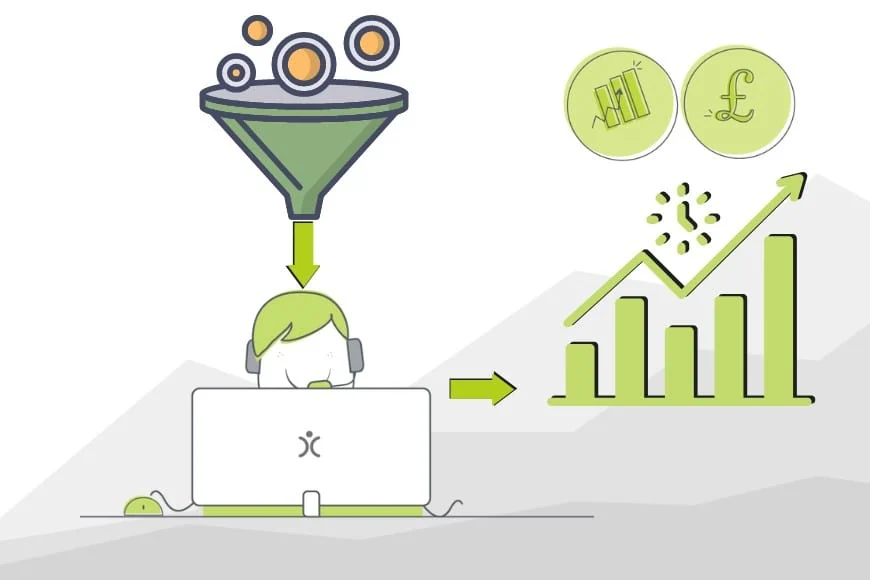Lead Management 101
4 Nov 2024
There cannot be many businesses that are not hungry for new customers. Attracting new Leads and doing some lead management means gaining new business. Whilst studies may have shown that it is more profitable to retain existing clients than bring new clients on board, most will still want to see a healthy CRM Leads pipeline.
After all, existing clients can quickly move onwards for many different reasons. You control some factors, such as price, product range, availability, that kind of thing. But customers also move on for reasons outside of your remit. Businesses get bought out, and with it, you lose contact with the decision-makers. Other companies go bust or fold. You cannot simply rely on your existing customer base for these reasons alone.
Managing Lead Sources
Having established that you need Leads, how do you attract them? Some typical strategies are advertising, direct marketing e.g. at a trade exhibition, inbound enquiries, a social media presence, and a contact us form on your website. Factors such as your industry and the size of your business will determine what works for you.
It is important to track those Lead Sources, in order to track it’s ROI (Return On Investment). Whilst many of you will track your web traffic using UTM parameters with Google Analytics, the rest of your data comes from disparate sources. This is where your CRM system comes into play, as you can track those sources quickly and easily. Whether doing a data import, entering Leads manually or creating them via a web form submission, you should always track the source. You can then review the outcomes. If you have what looks like a great form, but no one is completing it, maybe you need to simplify it?
Actions – how to manage new Leads
Once you have your CRM Leads, it’s time to think about Lead Management. Let me start by saying that no two Leads are the same (if they are – maybe you should look at implementing some duplicate checks in your system). You may need to strike with some leads while the iron is hot. Reach out to them as soon as they have come onto your radar, or risk losing them to your competition. Don’t forget that consumers are the ones calling the shots. They may be doing product research on a Saturday evening, so you probably don’t want to wait until Monday morning before showing a sign of life!
Auto-Emailing is one powerful tool you can employ within your CRM. This enables you to automatically send emails to Leads as soon as they have submitted a web enquiry.
GDPR: your data, your rules
We've always put data protection at the heart of OpenCRM. So with the introduction of GDPR, we've added new tools and features so you have the control you need to implement your policies and achieve compliance.
find out more
Other Leads may require a more detailed approach. Perhaps your accounts team need to carry out a check with Companies House, the Lead needs to be assigned to the correct salesperson, and they need to schedule a meeting. Pretty much all that task allocation and lead assignment can be automated, reducing the chance of a good Lead slipping through the cracks.
Lead Times and GDPR/ DRR
Normally this question is about pieces of string, but I’m going to ask instead – how long is a lead?! As I mentioned earlier, some leads – especially when it comes to Fast Moving Consumer Goods (FMCG) markets, are done and dusted in a day, if not hours or even minutes. Others that have a longer procuration process might take a year to reach a stage where they can be moved on. In the first scenario, you may be looking at high-volume, low-cost leads. Before you clog up your system with a high volume of redundant leads, it may be worth seeing what you can do about them.
This is where Data Retention Rules (DRR) can assist with your lead management. You can set parameters to tell the system when the data is no longer relevant. Once those conditions are met, the DRR kicks into action, removing the data you no longer need.
Note that there is more to this than you may initially think. “I’ve deleted the lead, that’s all I need to do, right?”. If you have yet to do anything with that lead, then that will work. But what about any emails you may have sent. Or Activities you have logged against that record. As you can see, there is more to it than simply getting rid of one record. The good news is that your CRM system is equipped to amend the correct data.
This is all part of the bigger picture relating to GDPR, and the idea that you should only store data as and when it is relevant, and not keep it in other circumstances.
Conversion
At what stage do you consider your lead “warmed up” enough to move them into your sales pipeline? Commonly, in OpenCRM terms, this is where you have moved someone from being a suspect to being a prospect. At the suspect stage, things can still be fairly vague. It could be as little as having a name and an email address. By turning them into prospects, you have qualified the lead, and there is a real chance of doing business. That’s when you will convert your lead, and you have a number of options.
When you convert the lead, you can create any combination of a new Contact, Company and Opportunity. This helps cater for different types of businesses. A B2C outfit might only sell to end-users and, therefore, doesn’t need to create a new Company record. B2B might only want to create a new Company. In either scenario, you might want to create a new Opportunity there and then, or you may decide to complete that later. Flexibility is key when it comes to your lead management within your CRM. Your system should work the same way you do, rather than you turning your processes on their heads.
Reporting on Leads and Opportunities
I mentioned tracking your ROI earlier on in this post. I’d like to explore a couple of options for you that will help.
Firstly, you can easily report on data stored within your CRM system. One such report allows you to compare converted Leads and Opportunities. This is pretty simple to do.
Secondly, there are some clever tools in the Campaigns module that might be interesting. In a nutshell – you can add CRM Leads to a Campaign, and track the results in one place. You can add the cumulative value of Opportunities to a Campaign, and compare it with the costs which can also be added to the Campaign. That gives you the figures right where you need them.
What if I don’t need Leads at all?
Some industries have millions of potential leads out there, whilst others might only have a handful. Imagine you are a manufacturer operating in a very niche industry where you are already on first-name terms with your possible stakeholders. In the first scenario, it absolutely makes sense to store that information in the Leads module itself, to keep your Companies and Contact databases clean. But for those smaller industries, you could store everything in Companies and Contacts, using the “Type” field to differentiate between the different stakeholder groups you interact with. If using a feature will benefit your company then you should definitely do so. It is always in your best interests to streamline your CRM, to make it as user-friendly as possible.
Conclusion
Lead Management means CRM Leads. Stop collecting potential leads on a scrap of paper in your wallet, in your email inbox, or on a spreadsheet! Bring them into your CRM so you have that full overview of where your potential business lies in wait. Use the automation tools at your disposal to work on those leads as soon as possible. In today’s environment, you really can’t afford to let leads slip away. Let your CRM ensure they don’t fall through the cracks.
My role is to build our Customer Success team and I work with our clients and prospects helping them get the most from their subscription – it is a fun challenging role as no two days are the same. When not in the office I’ll be either making a noise on my guitar or getting my trainers on for a run out in the Yorkshire Dales, North York Moors or the Lake District.
